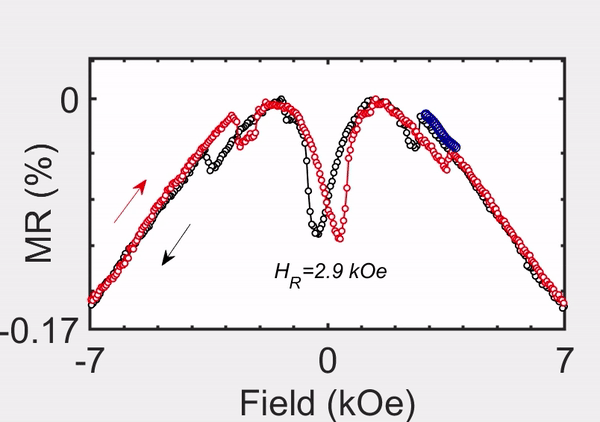3D nanomagnetism: there is plenty of room at the top
Finding a hardware platform compatible with artificial intelligence and neuromorphic architectures is a key challenge of future computing. Three-dimensional (3D) systems are well suited to address this need, as harnessing the complex nature and degrees of freedom associated with their structure can provide enriched functionalities. 3D nanomagnetic devices are particularly promising due to their energy efficiency, non-volatility, and scalability, and can be utilized to implement novel types of magnetic memory and logic devices, as well as neuromorphic computing. In a study just published in Nano Letters, Prof. Kai Liu’s group and collaborators, led by Dr. Dhritiman Bhattacharya, have demonstrated the potential of 3D interconnected nanowire networks to be used as neuromorphic computing elements.
The quasi-ordered interconnected networks were constructed from magnetic nanowires made of cobalt through electrochemical deposition. Previously, Liu’s group demonstrated interesting magnetic properties of these networks where magnetic domain walls get pinned at the intersections between nanowires. In this study, they have employed electrical transport measurements of magnetoresistance (MR), together with magnetometry, magnetic imaging and micromagnetic simulations to further understand magnetic characteristics and switching pathways in the complex nanowire networks.
They have observed discrete propagation of magnetic states in interconnected Co nanowire networks driven by magnetic field and current, manifested in distinct MR features. Micromagnetic simulations carried out by Zhijie (Hugh) Chen in Liu’s group, together with Prof. Gen Yin, show that these MR features are due to domain wall (DW) pinning at the nanowire intersections. This is further confirmed by off-axis electron holography imaging performed by Chen Liu and Prof. Xixiang Zhang at King Abdullah University of Science & Technology. First-order reversal curve measurements of MR (MR-FORC) illustrate the strong dependence of magnetization reversal on the initial magnetic state and prior magnetic history of these networks.
These properties are desirable to fashion non-Boolean computing devices such as spintronic memristors and synaptic devices where different resistance states or synaptic weights can be programmed by controllably switching a certain subsection of the networks. These networks may also find potential applications in reservoir and probabilistic computing, as well as physically unclonable functions.
Thus, this study highlights the potential of interconnected nanowire networks to be used as 3D information storage and unconventional computing devices utilizing their capability to stabilize different magnetic configurations, along with controlled and discrete propagation through the networks. Further investigation of this promising system could ultimately lead to 3D magnetic nanostructure-based energy efficient devices capable of realizing a multitude of functionalities.
Other researchers involved include Christopher Jensen in Liu’s group, Dr. Edward Burks at the University of California, Davis and Prof. Dustin Gilbert at the University of Tennessee – Knoxville.
This project was supported in part by the National Science Foundation as well as the Spintronic Materials for Advanced InfoRmation Technologies (SMART) Center sponsored by the Semiconductor Research Corporation and the National Institute of Standards and Technology.


